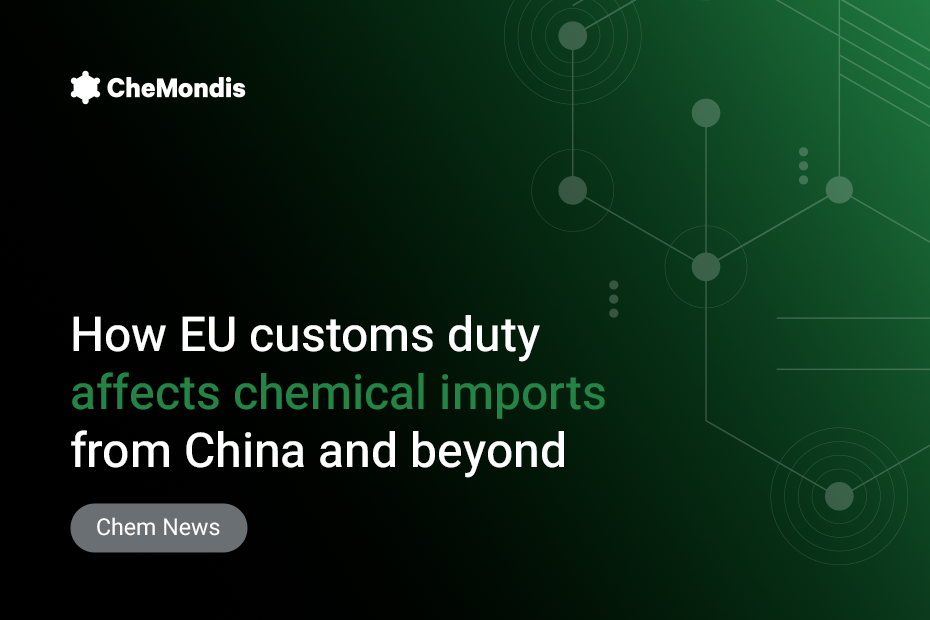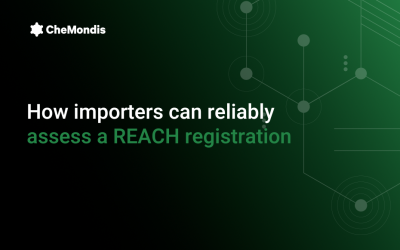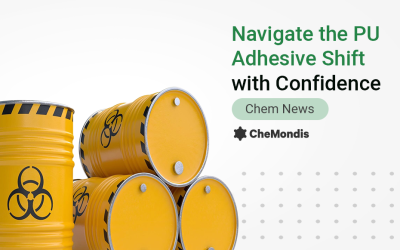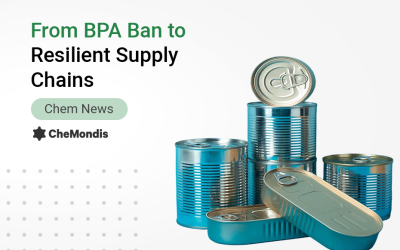Why taking a closer look at the new EU Regulation is worth it
The EU’s tariff quota system may sound like a bureaucratic detail, but for chemical importers it has very real financial consequences. It defines which goods can enter the EU at reduced or zero customs duty and for how long these advantages apply. Those who understand and use tariff quotas can save significant costs, while those who overlook them risk paying more than expected and losing price stability.
The latest amendment, Regulation (EU) 2025/1292, defines the quotas and duty suspensions applicable from 1 July 2025. Future updates will continue to adjust these conditions regularly, meaning importers must closely monitor which chemicals benefit from reduced customs duty rates. Autonomous tariff quotas are designed to secure industrial supply and close production gaps within the EU. They are based on two key variables: quantity and time. Both determine whether an import remains duty-free.
Quantity and time determine the customs advantages of tariff quotas
Each tariff quota has a clearly defined limit. Once that limit is reached, the preferential treatment automatically ends, and the regular EU customs duty rate applies again. The same applies to timing. Many quotas are valid from 1 January to 31 December, including those that begin on 1 July and expire at the end of the year. Both factors determine whether an import remains duty-free.
Quantity limitation
Each quota has a clearly defined quantity limit. Once this amount is reached, the preferential treatment automatically ends, and the regular rate of the Common Customs Tariff applies again.
These quantities are precisely defined, for example:
- 1,000,000 tons of acetic acid
- 180,000 tons of paraffin
- 27,500 tons of L-(+)-lactic acid
- 57,500 tons of dimethyl terephthalate
- 30,000 tons of acrylonitrile
For importers, this means the duty saving is a limited quota shared across the entire EU. Those who register late may miss out.
Time limitation
Tariff quotas are also valid only within a specific period. Many run from 1 January to 31 December, while others, particularly new or amended ones, apply from 1 July 2025 and end on 31 December. These include, for example, the new quotas 09.2010, 09.2017, and 09.2024.
The interaction is crucial: the reduced customs rate applies only as long as the quota quantity has not yet been exhausted within the current quota period.
If the quota is used up in October, the duty exemption ends for the rest of the year. The quota reopens only when the new period begins.
In practice, this means that the same product can be inexpensive in July and suddenly more expensive in November, even though raw material or transport costs have not changed.
Examples of tariff quotas in the chemical industry
The following overview lists typical chemical products for which the EU has established a tariff quota under Regulation (EU) 2025/1292. It shows how precisely both the quantitative and temporal limits are defined.
| Quota No. | Product description (chemical substance) | Quota period | Quota quantity |
| 09.2638 | Acetic acid (CAS 64-19-7) with a purity of 99 GHT or more | 1.1.–31.12. | 1,000,000 tons |
| 09.2679 | Vinyl acetate (CAS 108-05-4) | 1.1.–31.12. | 370,000 tons |
| 09.2828 | Paraffin with an oil content of less than 0.75 GHT | 1.1.–31.12. | 180,000 tons |
| 09.2540 | Dimethyl terephthalate (CAS 120-61-6) with a purity of 95 GHT or more | 1.1.–31.12. | 57,500 tons |
| 09.2742 | Acrylonitrile (CAS 107-13-1) for the manufacture of products of Chapter 55 and heading 6815 | 1.1.–31.12. | 30,000 tons |
| 09.2700 | Propan-1-ol (Propyl alcohol, CAS 71-23-8) | 1.1.–31.12. | 15,000 tons |
| 09.2921 | 2-(Dimethylamino) ethyl acrylate (CAS 2439-35-2) with a purity of 99 GHT or more | 1.1.–31.12. | 14,000 tons |
| 09.2567 | Trichloroethylene (CAS 79-01-6) with a purity of 99 GHT or more | 1.1.–31.12. | 11,885 tons |
| 09.2017 | L-(+)-Lactic acid (CAS 79-33-4) for pharmaceutical purposes | 1.1.–31.12. | 27,500 tons |
| 09.2024 | Tetrahydro-2-methylfuran (CAS 96-47-9) with a purity of 99 GHT or more | 1.1.–31.12. | 750 tons |
Once the quota quantity is exhausted, the regular customs duty applies to all remaining imports, even if contracts were signed earlier in the year.
When calculation becomes a balancing act
This is where the greatest risk in purchasing arises.
Many companies plan their sales prices based on purchasing conditions without customs duties. However, if the quota is exhausted during the year, the full customs duty suddenly applies, often between five and six percent.
This immediately changes the calculation. Price lists must be adjusted and margins reviewed. In practice, this can mean that an identical product becomes more expensive in the next quarter even though raw material prices or transport costs have not changed.
Anyone responsible for purchasing should therefore regularly check not only raw material prices but also the availability of tariff quotas.
Duty-free importation only through active registration
The exemption from customs duties does not apply automatically. To apply the zero rate, the importer must indicate the correct CN code, TARIC code, and the quota number when submitting the customs declaration.
The decisive point in time is the acceptance of the customs declaration for release for free circulation. It is not the date of order or shipment, but the actual registration that determines whether quota volume is still available.
If the EU-wide quota quantity is exhausted, the full duty rate applies even if the contract was signed long beforehand. The margin impact can be immediate.
End-use and monitoring
Many chemical products listed in the regulation are subject to monitoring by customs authorities regarding their end-use.
The importer must declare for what purpose the imported goods will be used.
Examples:
- L-(+)-lactic acid may only be used for pharmaceutical applications.
- Octadecyl-3-(3,5-di-tert-butyl-4-hydroxyphenyl) propionate may only be used for polymer stabilizers.
- Acrylonitrile may only be used for the manufacture of defined chemical products.
Those who fail to comply with the requirements or cannot provide evidence risk subsequent claims and fines.
Geopolitical restrictions on duty-free imports
In line with the EU’s sanctions policy, tariff quota exemptions no longer apply to goods originating from Russia or Belarus.
The products affected include paraffinic residues (No. 09.2600), acrylonitrile (No. 09.2742), C.I. Pigment Red 4 (No. 09.2698), and aluminum bars of alloys (No. 09.2835).
Since 1 July 2025, these products are again subject to the regular customs rate.
For companies importing chemicals from China or other third countries, this highlights the need to diversify sourcing and closely monitor regulatory changes.
Practical recommendations for chemical importers
Autonomous tariff quotas directly influence sourcing economics. When managed actively, they protect purchasing budgets and price stability. When overlooked, they erode margins and predictability.
- Monitor quotas regularly
Track which chemical products fall under a tariff quota and how much volume has already been used. - Prepare customs declarations carefully
CN code, TARIC code, and quota number must be entered correctly. - Adjust calculations and price lists
When a quota is exhausted, additional costs arise from EU customs duty. These must be immediately reflected in pricing. - Document end-use
For goods subject to end-use monitoring, evidence of actual use is required. - Diversify supply sources
For geopolitically affected goods, identify alternative producers and origins early.
Why this matters for chemical buyers
Autonomous tariff quotas may look like a line in the customs register, but they directly shape sourcing economics.
When managed actively, they protect purchasing budgets and stabilize pricing. When overlooked, they quietly erode margin and predictability.
For procurement teams, this means one thing: monitoring quantities, periods, and registration timing is just as important as tracking raw material prices.
At CheMondis, we follow regulatory updates such as Regulation (EU) 2025/1292 to help buyers make informed, data-based decisions that keep sourcing both compliant and competitive.
Source:
Council Regulation (EU) 2025/1292 of 24 June 2025 amending Regulation (EU) 2021/2283
Official EUR-Lex reference: can be found here.




